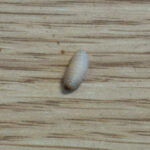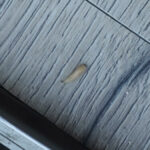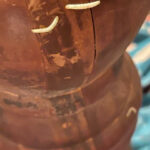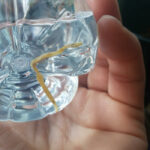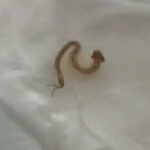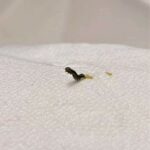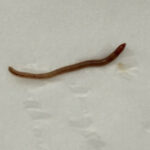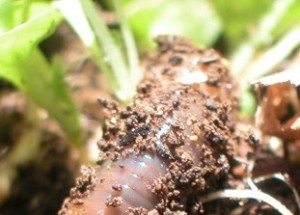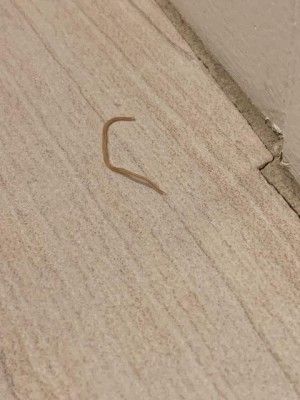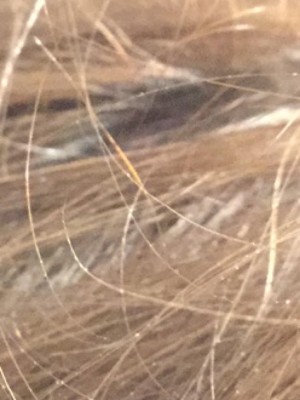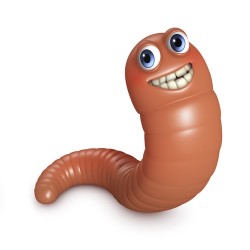
We received a straightforward worm-identification question from a reader a little while back: “what were the little white worms that I found in the morning when I came downstairs?” This (paraphrased) question is simple in a superficial sort of way because it only asks one thing, but the lack of any details (or an accompanying picture) makes it almost impossible to answer. The short question gives rise to a dozen more: What exactly constitutes a little white worm? Is the worm an inch, a half an inch, a quarter of an inch long? Is it skinny (relative to its length) too? Is it actually white, or is it an off-white color, perhaps with some minimally noticeable body marking (faint stripes, for instance)? The list goes on. So, we might not be able to correctly identify the little white worms our reader found, but what we can do is put forward a few possibilities, possibilities that are relevant to anyone who finds some small white worms in their house.
We went ahead and adopted our reader’s use of the word “worm,” but only out of convenience. She is almost certainly not finding worms (and in any case she isn’t finding whiteworms, a.k.a. Enchytraeus buchholzi, which are marine worms reared for fish food). Instead, she is probably dealing with some type of larvae, although this limits the range of possible answers in about the same way that focusing only on the western hemisphere limits the scope of a global manhunt.
Given that our reader found the larvae (or what we believe to be larvae) in her house, a few common house pests come to mind. Unfortunately, the reader only specified that she found them at the bottom of the stairs, so it is not clear in which part of the house the creature were found. Presumably, her stairwell doesn’t lead directly into the bathroom or a similar room (whatever that might be), but if it did, we might speculate that she found moth fly larvae, an extremely common pest around the house that people tend to find in toilets, sinks, and drains. (These creatures are also not normally white, although they can be when they first hatch out of their eggs.)
Another common household pest is the Indianmeal Moth (“pantry moths”) larva, which is commonly called a “waxworm.” (For the record, there are several species of waxworm – they are the larval form of the moths in the family Pyralidae – but the moth fly larvae is the species people tend to find in their houses.) Given that these creatures are often simply called pantry moth larvae, it is not surprising that people tend to see them primarily in the pantry, where they get into foods that aren’t well-sealed. However, they do spread further than the pantry, and if the bottom of reader’s stairwell is near the kitchen, perhaps this is what she is finding. Pantry moth larvae are also white, as the reader’s creatures are; in fact, they look almost exactly like maggots. (Speaking of which, it is also possible she found actual maggots, or fly larvae, but we think this is fairly unlikely because they tend to be found in places where there are accumulations of organic waste. In other words, a place like a trash can or maybe a really dirty part of a bathroom, but hopefully not the bottom of the stairwell.)
All of the larvae we have mentioned could be described as “little white worms,” and in fact so could many other creatures, so we of course can’t be sure that we correctly identified what our reader found. Moreover, none of the creatures we mentioned would ordinarily be found at the bottom of one’s stairwell. However, we think it is pretty likely that she found some type of larvae, and hopefully we’ve pointed her in the direction of what types of creatures she should be researching if she wants to find out with certainty what she found.
All About Worms is always free, always reader-supported. Your tips via CashApp, Venmo, or Paypal are appreciated! Receipts will come from ISIPP Publishing.



